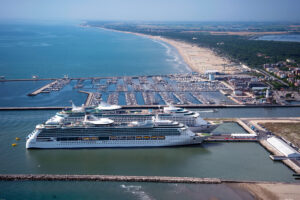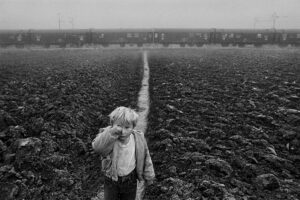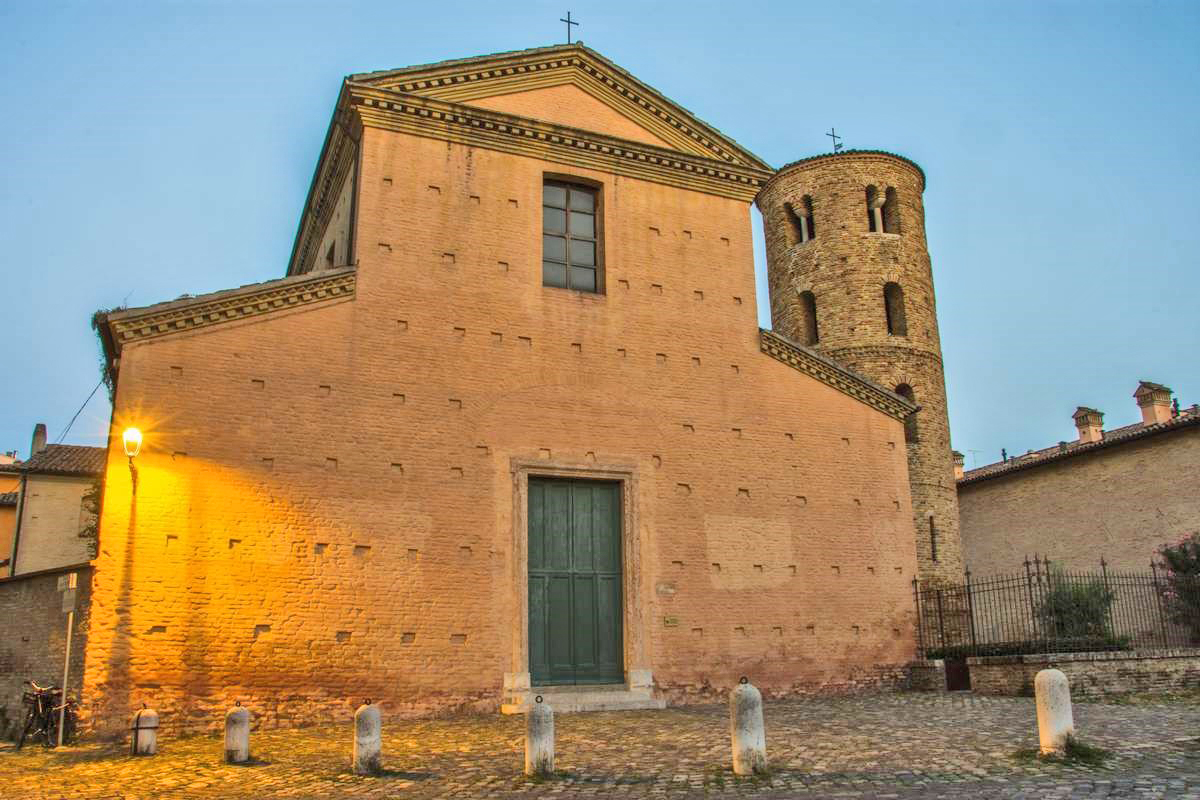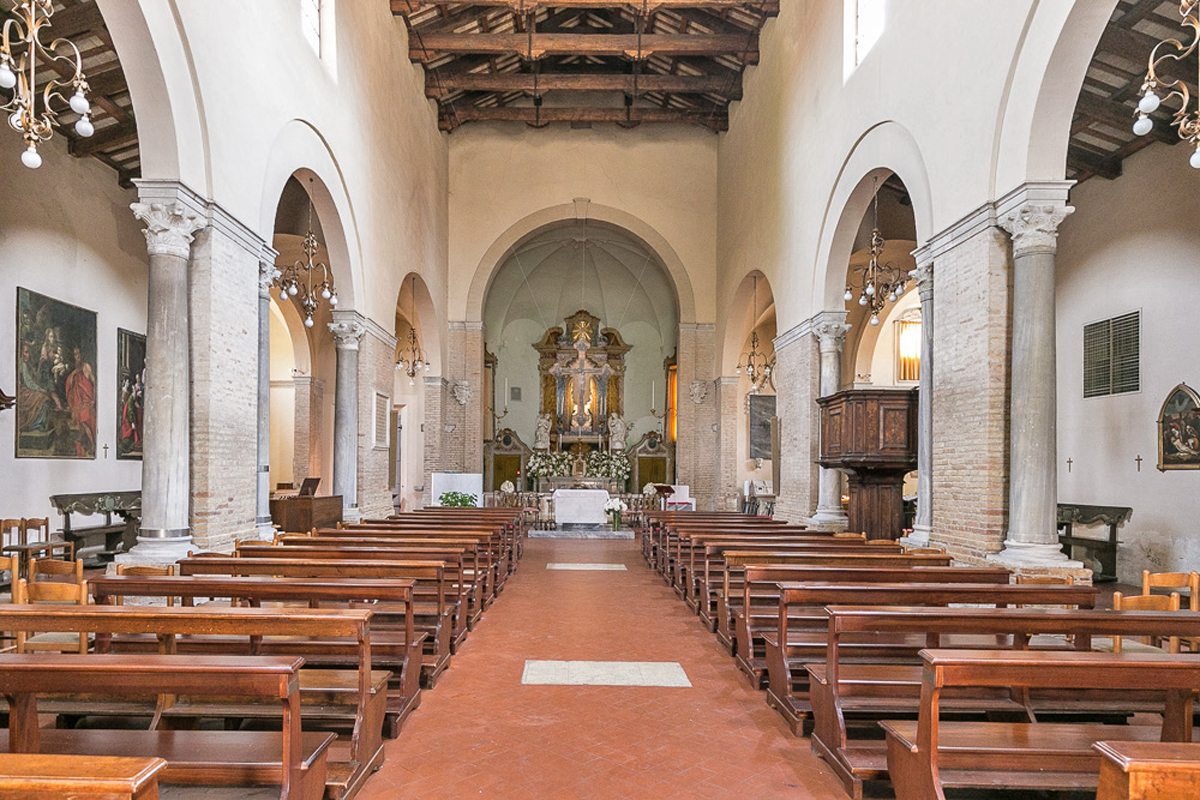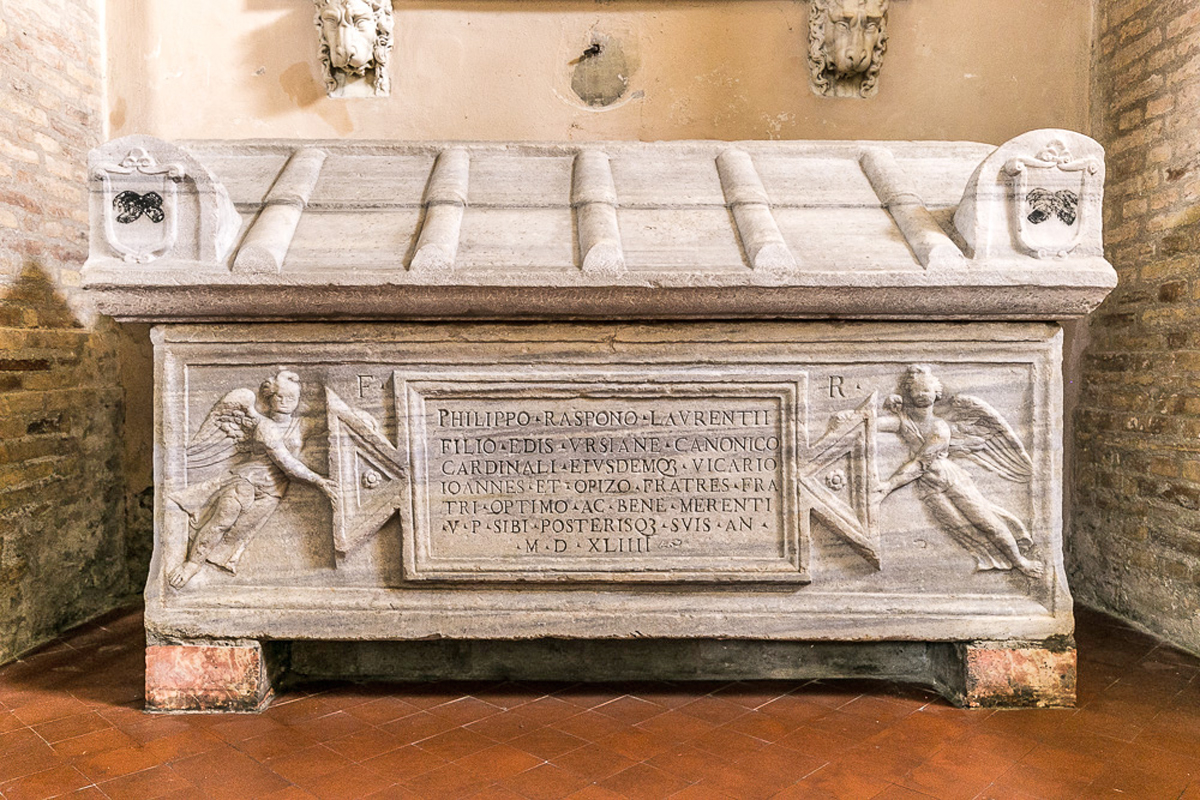Located next to the Basilica of San Vitale and the Mausoleum of Galla Placidia, the BASILICA OF SANTA MARIA MAGGIORE is a small religious building commissioned by Bishop Ecclesius (525 – 532 AD).
According to the historian Girolamo Rossi (16th century), Ecclesius converted his father’s house into a church, as it already happened in the case of many other early Christian churches in the area.
In the 13th century the church was entrusted to the Sassi family, then to the Polentanis, to the Morigias (17th century) and finally to the Rasponi del Sale family and other ones, up to the present day.
After being renovated at the beginning of the 20th century, the church is now a religious building and is used as a parish seat.
The interior of the basilica
Just like many other churches in Ravenna, the Basilica of Santa Maria Maggiore – which probably had a Latin cross plant at the beginning – was richly decorated with mosaics, that were progressively destroyed around the mid-16th century and then thoroughly renovated.
By entering the church today, it is possible to admire the Baroque-style renovation realised by architect Pietro Grossi in 1671.
He transformed the basilica plan into a nave and two aisles with two rows of round arches and re-used various original columns and capitals.
The cylindrical bell tower, with three orders of windows, was added between the 9th and 10th century. The apse, on the other hand, is still the original one, although stripped of its features.
Below the apse arch is the main altar, made of polychrome marbles and surmounted by the statue of the Virgin and the child dating back to the 17th century.
At the end of the left aisle there is a painting by Luca Longhi depicting Saint Paul visiting Saint Agnes in prison.
At the end of the right aisle, by contrast, is a Roman sarcophagus, later used as a sepulchre by the Rasponi family, and other prestigious paintings.
The fine tombstones inside the church indicate the burial place of some important people from Ravenna: architect Camillo Morigia (1743-95), designer of Dante’s tomb and other buildings in the city; historian Ippolito Gamba Ghiselli (1724-88); various members of the Rasponi and Monaldini families and many others.
What makes this basilica particularly popular, and dear to the people of Ravenna, is the small altar at the far right dedicated to Sancta Maria a tumoribus, represented in an image of the Virgin to whom the believers who care about the health of their loved ones speak to ask for recovery from cancer.
Next to the small fresco of Saint Mary of tumours, it is possible to notice a number of votive offerings decorating the wall as a sign of thanksgiving for the grace received.

